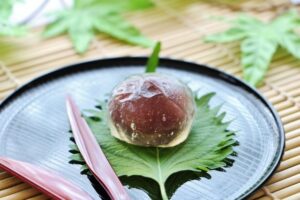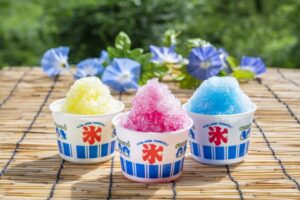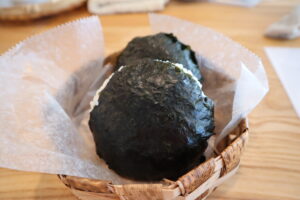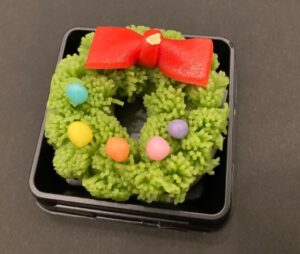Allow me to introduce another friend of mine, Yoko Nakajima, who has an absolute passion for rice balls.She runs a cooking class called “Ouchigohan,” where she teaches the art of home cooking.

(She prefers to use the term “onigiri” over “omusubi,” so I’ll stick with “onigiri” from here on.)
Let’s explore the charm of onigiri through her onigiri tales.
The four charms of Onigiri
I asked her why she loved Onigiri so much.She explained to me the four charms of Onigiri.
Convenience of Onigiri
First and foremost, onigiri is like fast food. It can be quickly and easily eaten. For instance, whether you’re exercising, working in the fields, or even studying, you can grab one and eat it swiftly with just one hand. That, according to Ms.Nakajima, is its greatest appeal.
Due to this convenience, she hopes people will have onigiri for breakfast. Her dream is to open a morning onigiri cafe for children who may not have access to a full meal in the morning.
The goodness of Japanese rice
She wants people to discover the goodness of Japanese rice through onigiri. Rice is not only filling but also healthy. She makes onigiri as a means to convey the appeal of rice to people.
Nostalgia of Onigiri
There are hardly any Japanese people who have never eaten onigiri. Onigiri brings a sense of nostalgia to many people. Ms. Nakajima’s memorable onigiri was the large ones her mother used to make, always filled with the traditional umeboshi (pickled plum). She used to bring three of those onigiri in her bento. She was a child who loved to eat a lot.


And she also made large onigiri with lots of memories for her children, who have now grown up. There are many family memories associated with onigiri.
Freedom to create various arrangements
She is skilled at creating onigiri with various arrangements. She posts on social media different flavored onigiri every day.
When making arrangements, she decides on a theme first. For example, when the theme of “something refreshing” comes to mind, she uses umeboshi or shiso.

When the theme is “something for lunch,” she makes omurice onigiri, tenkasu onigiri, soboro onigiri, or fried rice onigiri.

You can make them any way you want. You can put anything inside, and the shape can be triangular or round. The versatility of being able to create various arrangements is what Ms. Nakajima considers the charm of onigiri.
Recipe Introduction
She hopes that everyone will make onigiri, and here’s her recipe. I encourage you all to give it a try.
Simple onigiri recipe
First, let’s start with a simple onigiri recipe.
Typical fillings include umeboshi (pickled plum), shiokonbu (salted kelp), salmon flakes, tuna, bonito flakes, etc. Ms.Nakashima’s favorite is umeboshi, known for its tangy flavor and long shelf life.
So, let’s make it with umeboshi.
◆ Simple onigiri with umeboshi(One serving)
【ingredients】
・Cooked white rice: 150g ※
・Salt: 2g
・Small pickled plum(Umeboshi): 1 piece
・Roasted seaweed (nori): 1/4 sheet
※Add a small amount of salt when cooking rice; that’s her method. Add about 1/2 teaspoon of salt to 2 cups of rice before cooking in a rice cooker.
1.Hand-Molding Method:
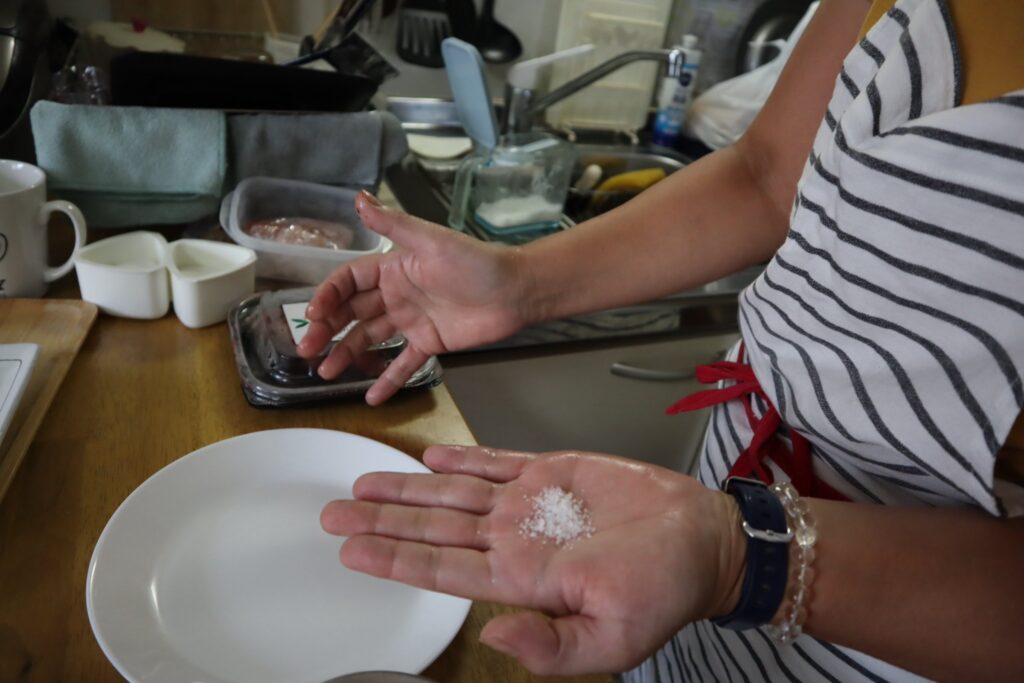
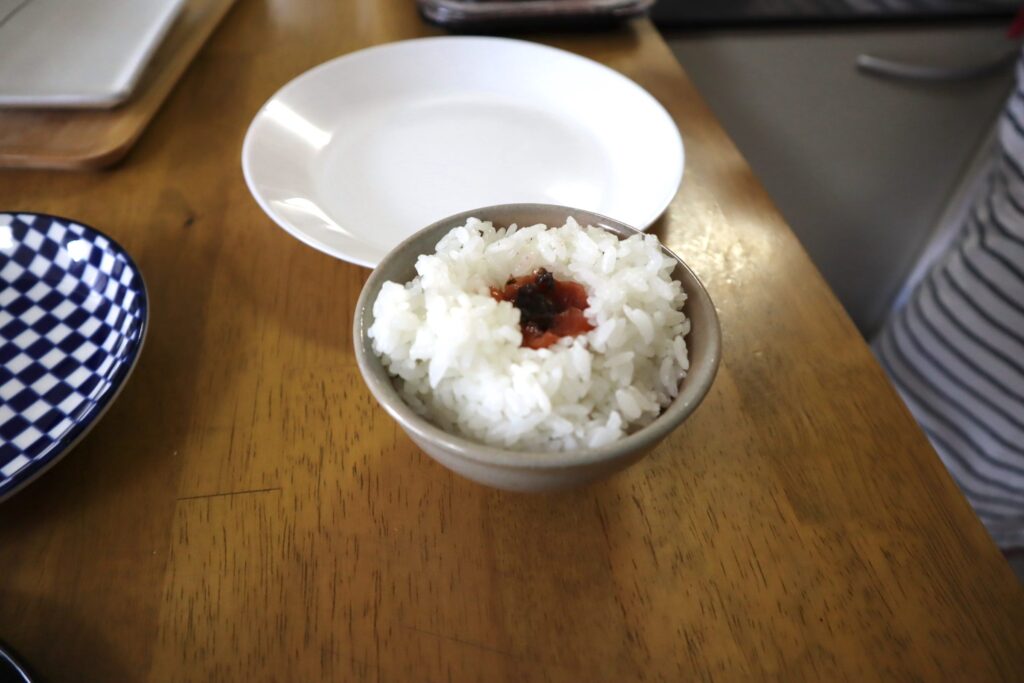

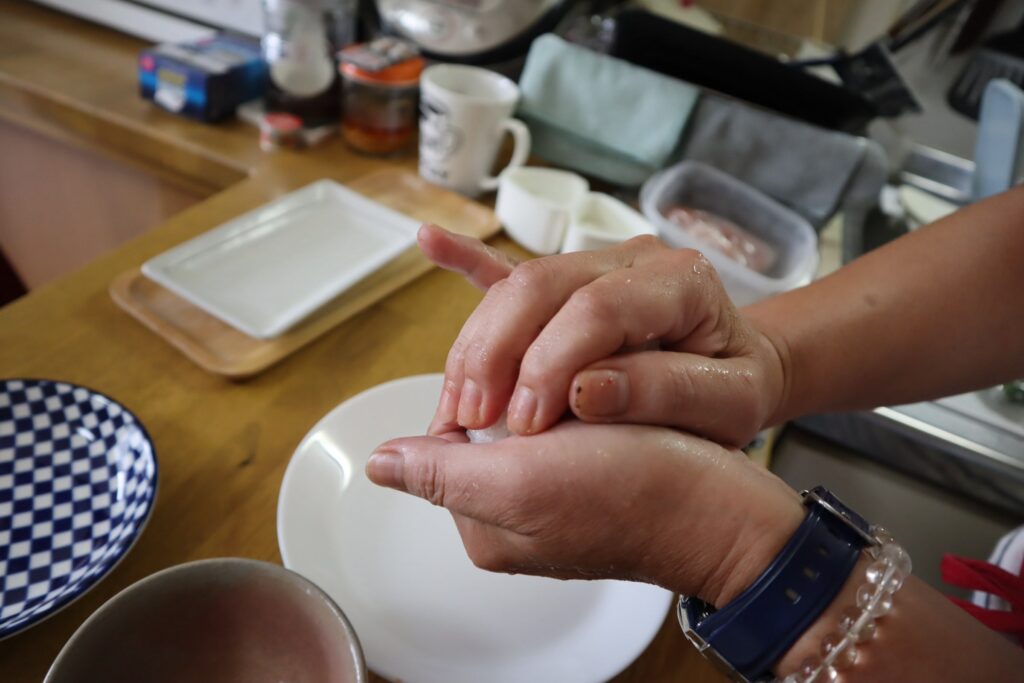
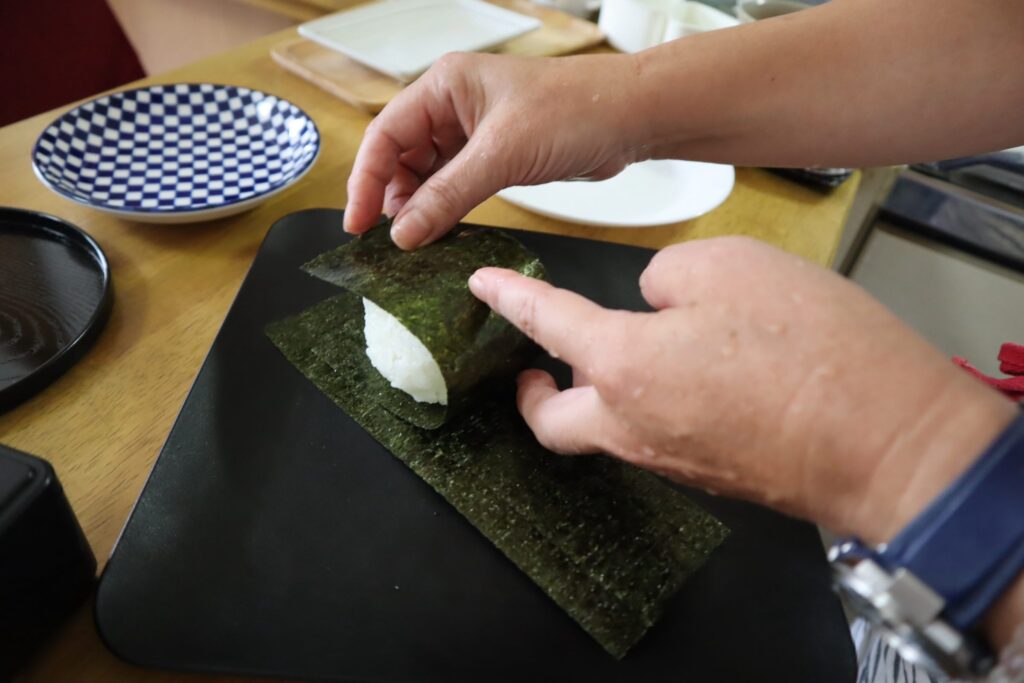
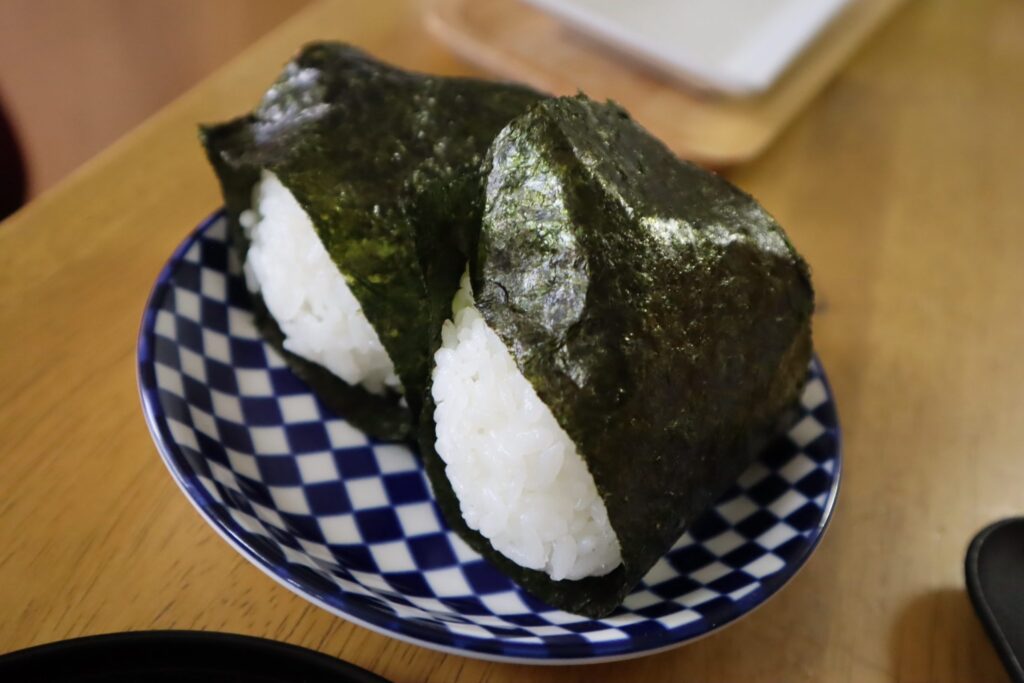
2.Using a Mold:
If you dislike using your bare hands, you can use a mold, which you can buy for about a hundred yen.
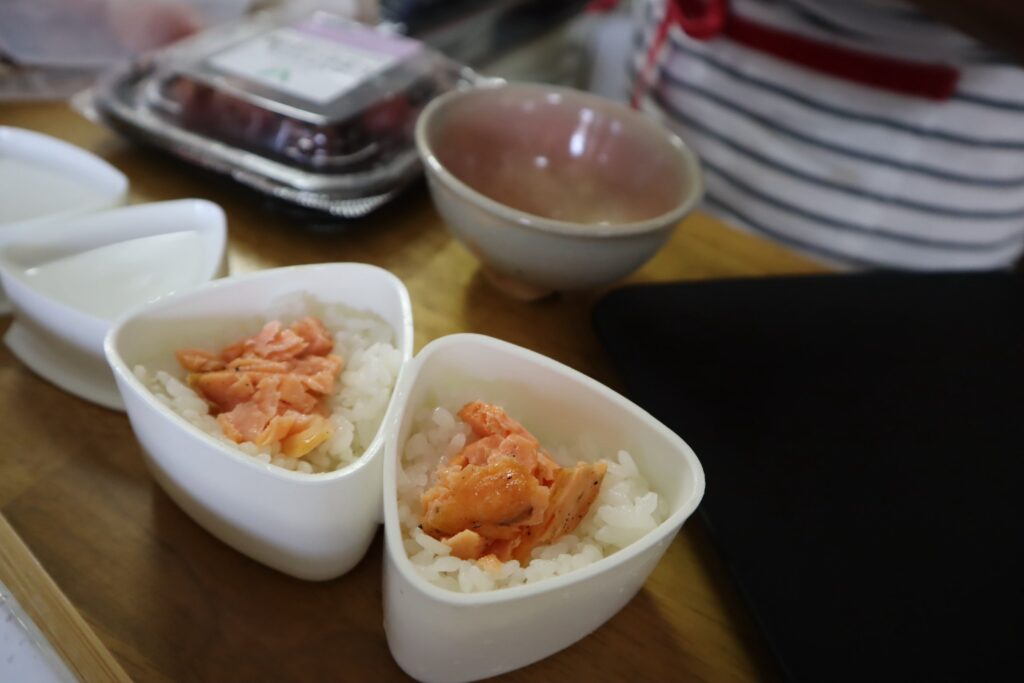
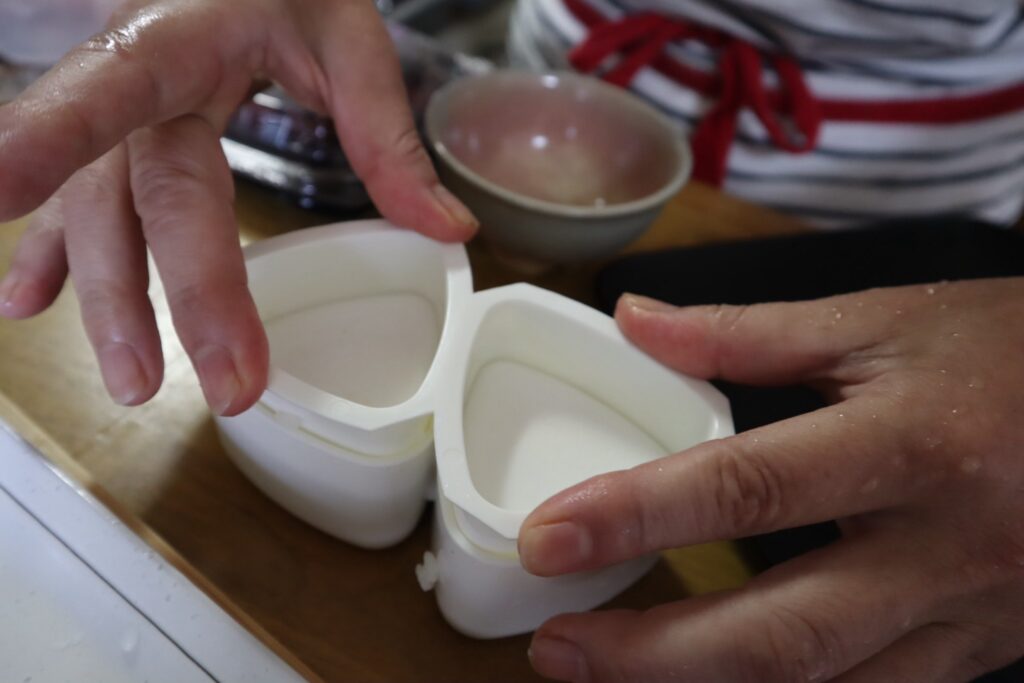
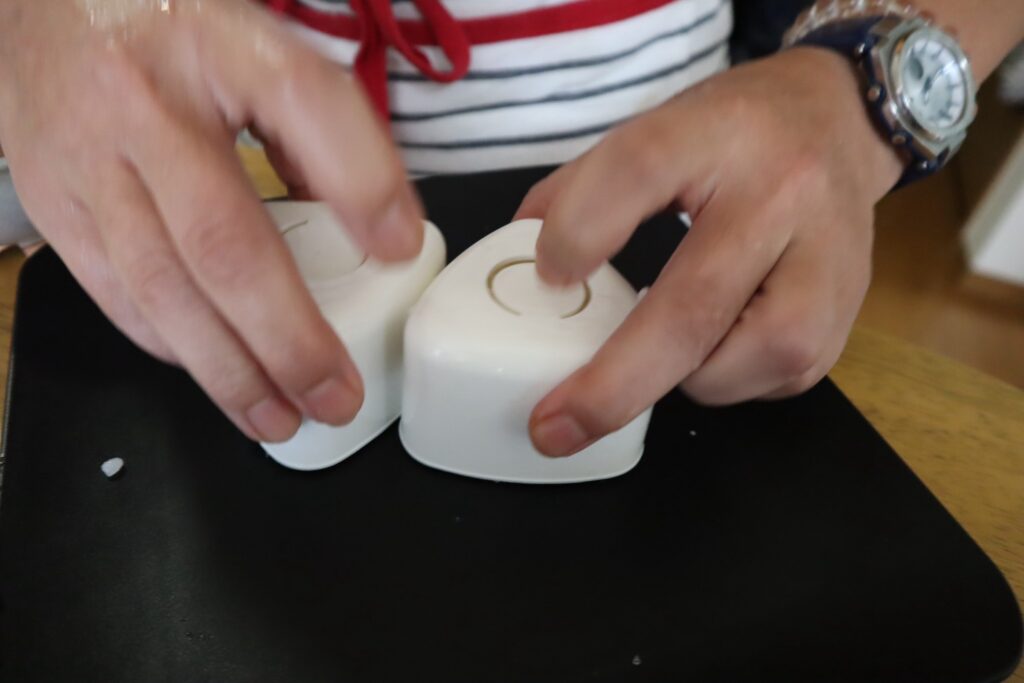


Tenkasu Onigiri
◆Tenkasu Onigiri (One serving)
【Ingredients】
・Cooked white rice: 150g
・Tempura scraps (tenkasu): 3-4g ※
・Dried sakura shrimp: 2g
・Noodle soup base : 5-6g
※Tempura scraps, the bits left over when making tempura, add a crispy texture initially, which turns moist over time. They’re also used in dishes like udon.
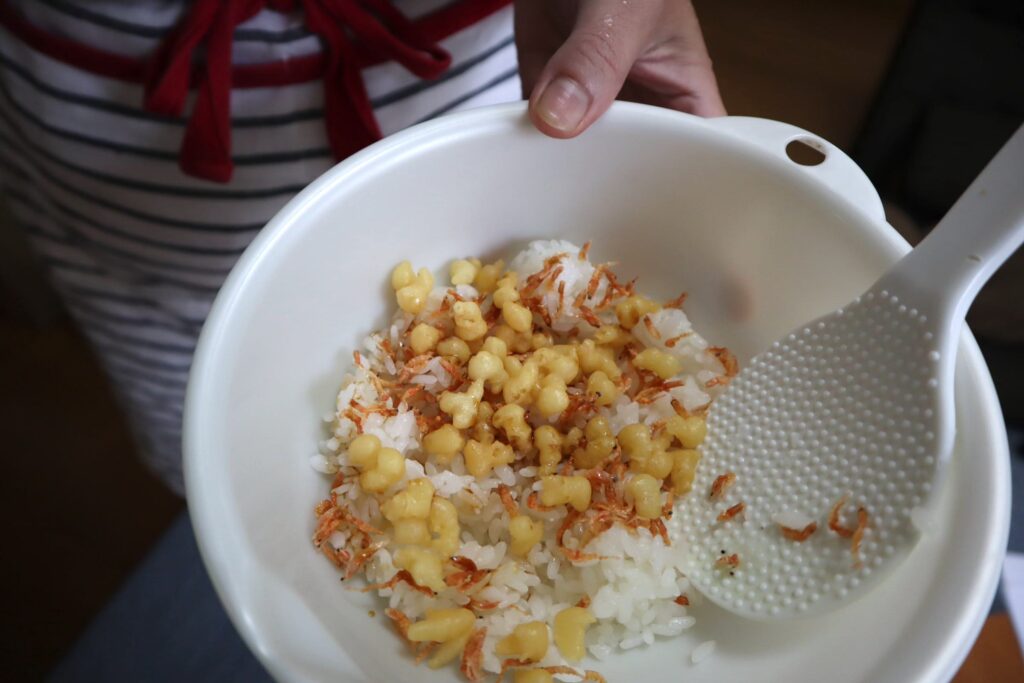
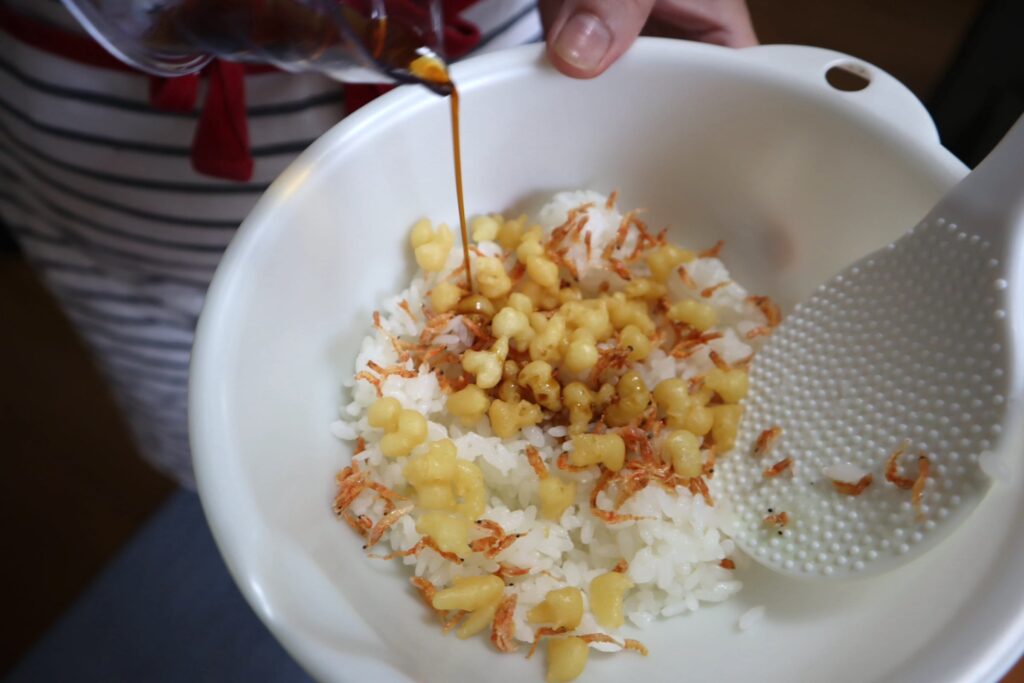
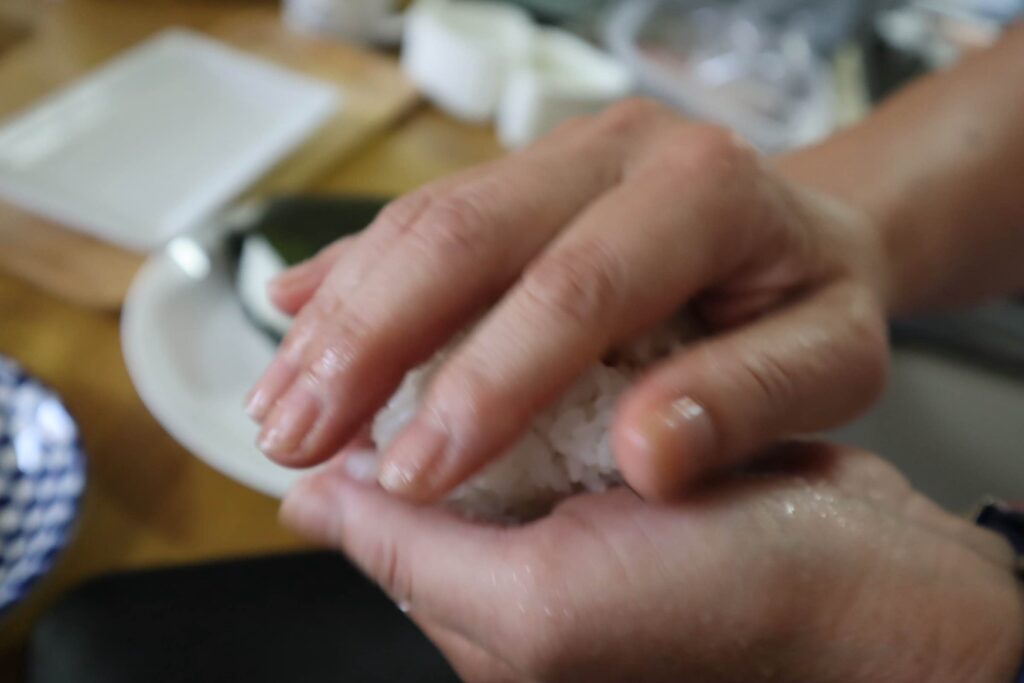

Chirimenjako and Cheese Onigiri
◆Chirimenjako and Cheese Onigiri (One serving)
【Ingredients】
・Cooked white rice: 150g
・Chirimenjako (dried baby sardines): 10g
・One piece of cheese or one slice of processed cheese
・A pinch of salts
・A sprinkle of green seaweed (Aonori)

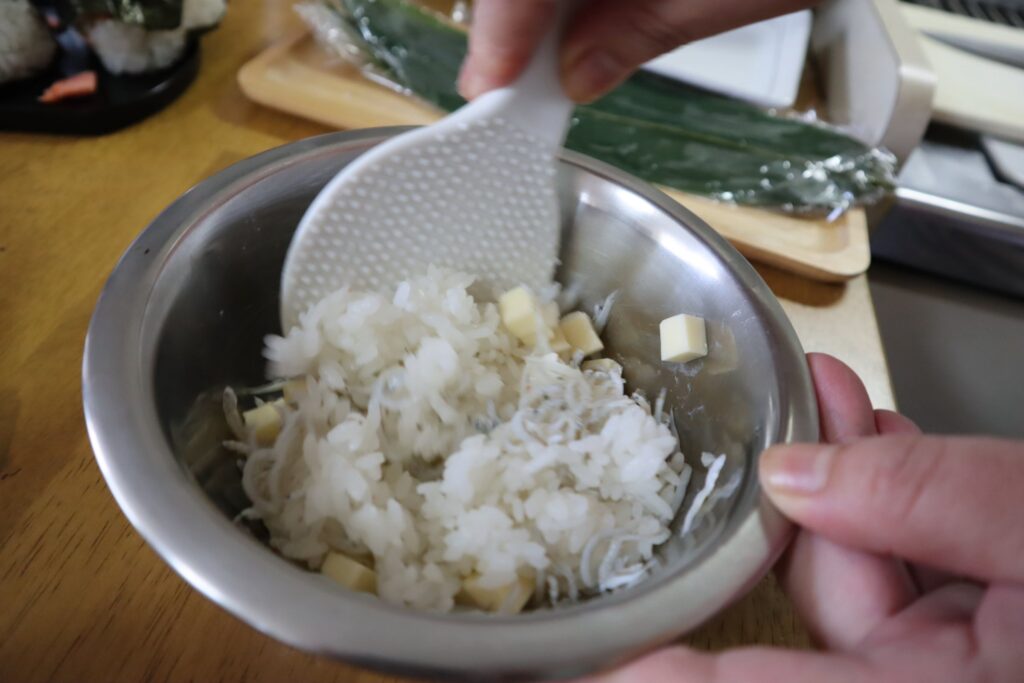
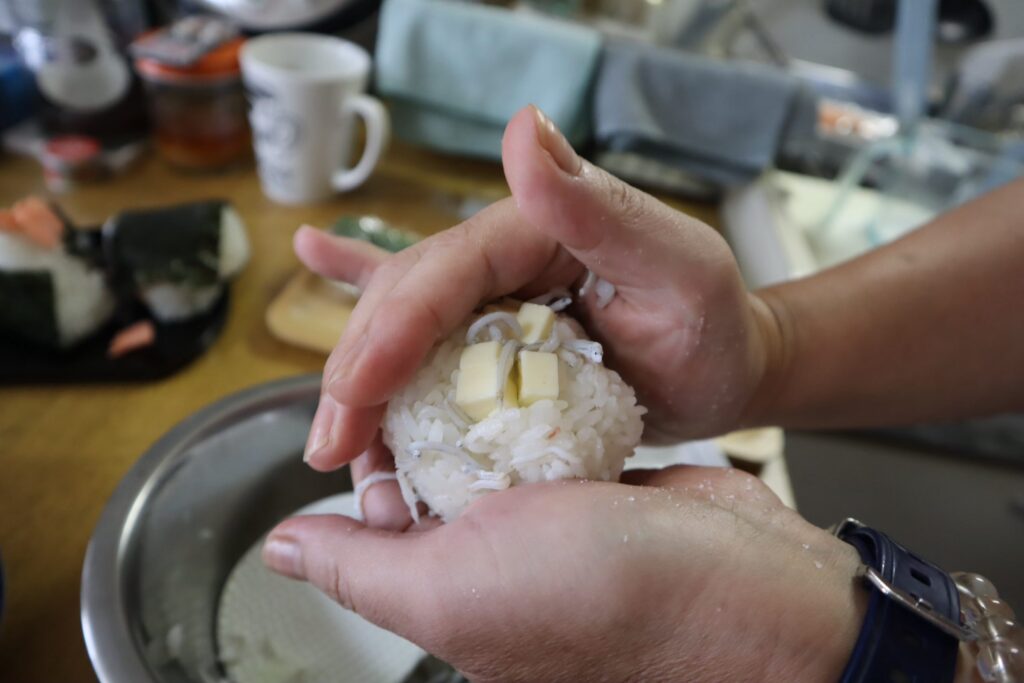
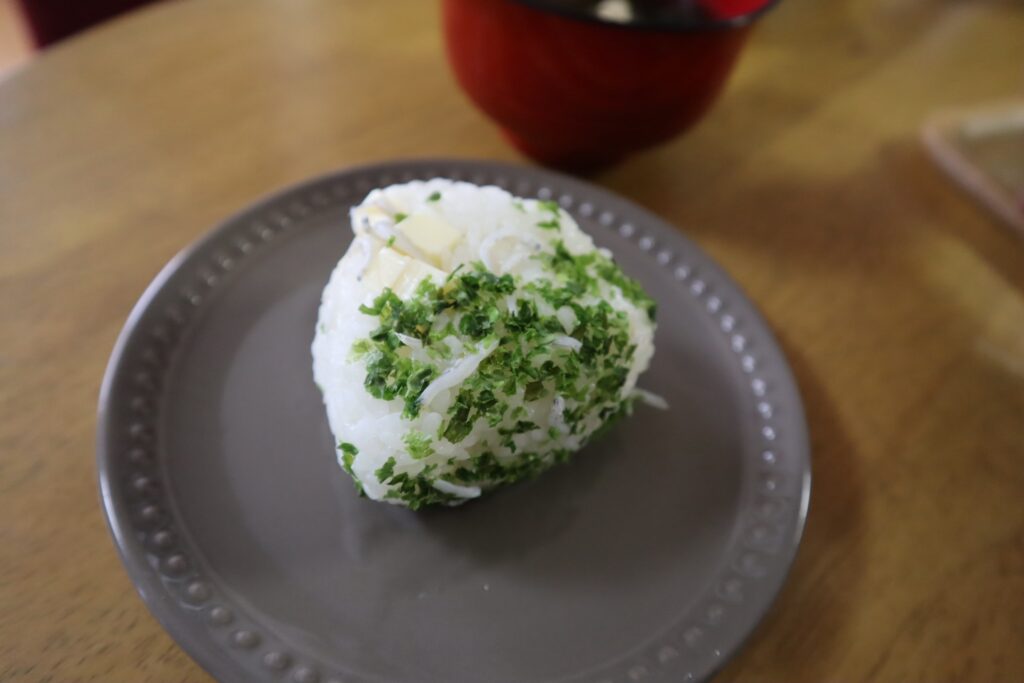
Regarding the salt used for onigiri
Ms.Nakashima is particular about salt and uses coarse or roasted salt.
Coarse salt is unrefined, naturally occurring salt with larger particles and contains minerals like potassium and magnesium. Roasted salt is heated to remove moisture. She sometimes buys various salts from shrines during travels, enjoying the different flavors of purified salt available there.
☆
Although you can buy onigiri at convenience stores , she emphasizes the joy of making them. Please try making onigiri and discover your own favorite flavors!!





